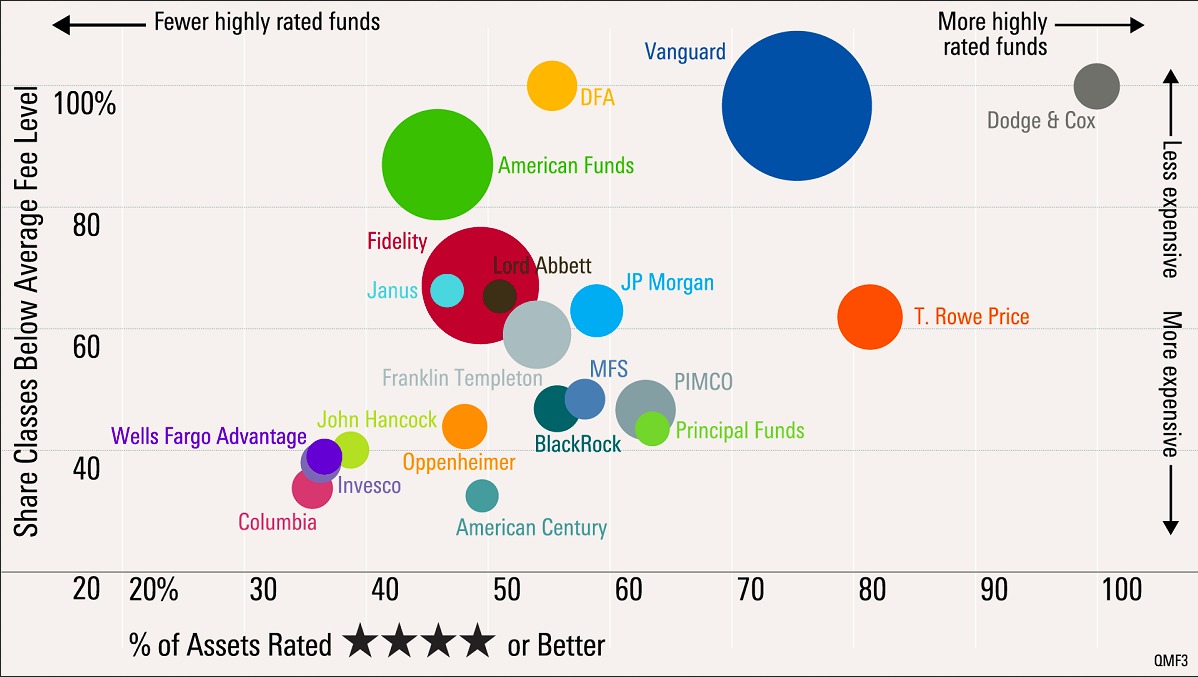It goes without saying that investing isn’t free. Investment products and services come with costs and fees.
And if you’re not vigilant, these costs can take their toll on your portfolio over the long term.
If you invested $100,000 and assumed 4% annual growth for 20 years, your portfolio would take a $10,000 hit from a 0.50% annual fee and a $30,000 haircut if the fee burden was 1.0%, according to recent SEC investment advisory.

Fees & Performance
Now, take a look at this informative chart from Morningstar Investment, which shows a clear link between fees and fund performance.

The research firm looked at the top 20 mutual fund firms by assets.
It then ranked them by average fees along a vertical axis and the percentage of their assets with a Morningstar Rating of 4 stars or better along the horizontal one.
The Morningstar Rating for funds is based on trailing risk-adjusted returns over three-, five-, and 10-year periods.
Highs and Lows
The size of the bubbles denoting each firm represents the amount of assets under management.
So it’s pretty clear there’s a correlation between fees and performance.
Wells Fargo Advantage, Invesco and Columbia in the lower left corner of the chart have high fees and relatively low return performance based on the Morningstar analysis.
Vanguard, the largest fund firm, and Dodge & Cox are the standouts in the upper right hand.
Takeaway
Low-fee funds tend to give investors the best chance of success over the long term.
If your fees are too high, don’t be afraid to shop around.
Online platforms that cater to “do-it-yourself” or semi-involved investors ready to take control over their financial decisions offer lower fees.
If you want a better deal, take action.
Continued Learning: Smart investing ideas for the mighty dollar
Photo Credit: tax credits via Flickr Creative Commons



